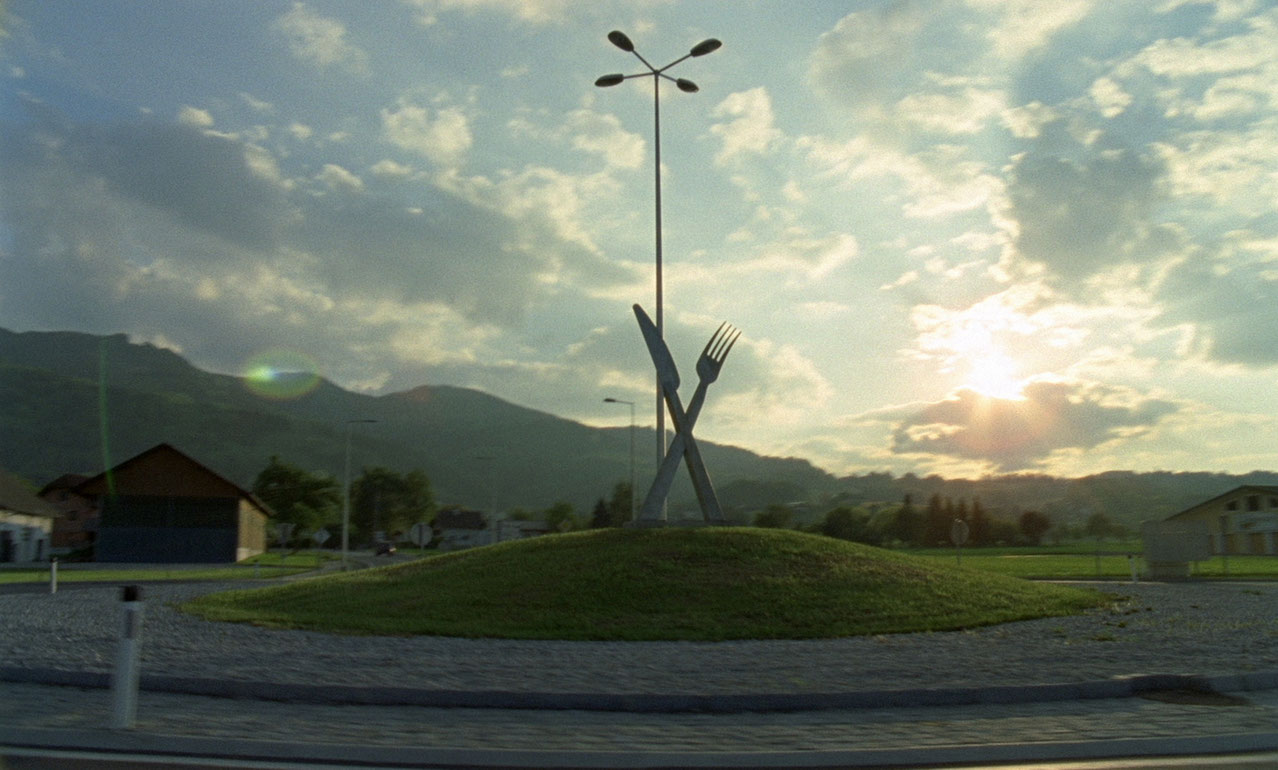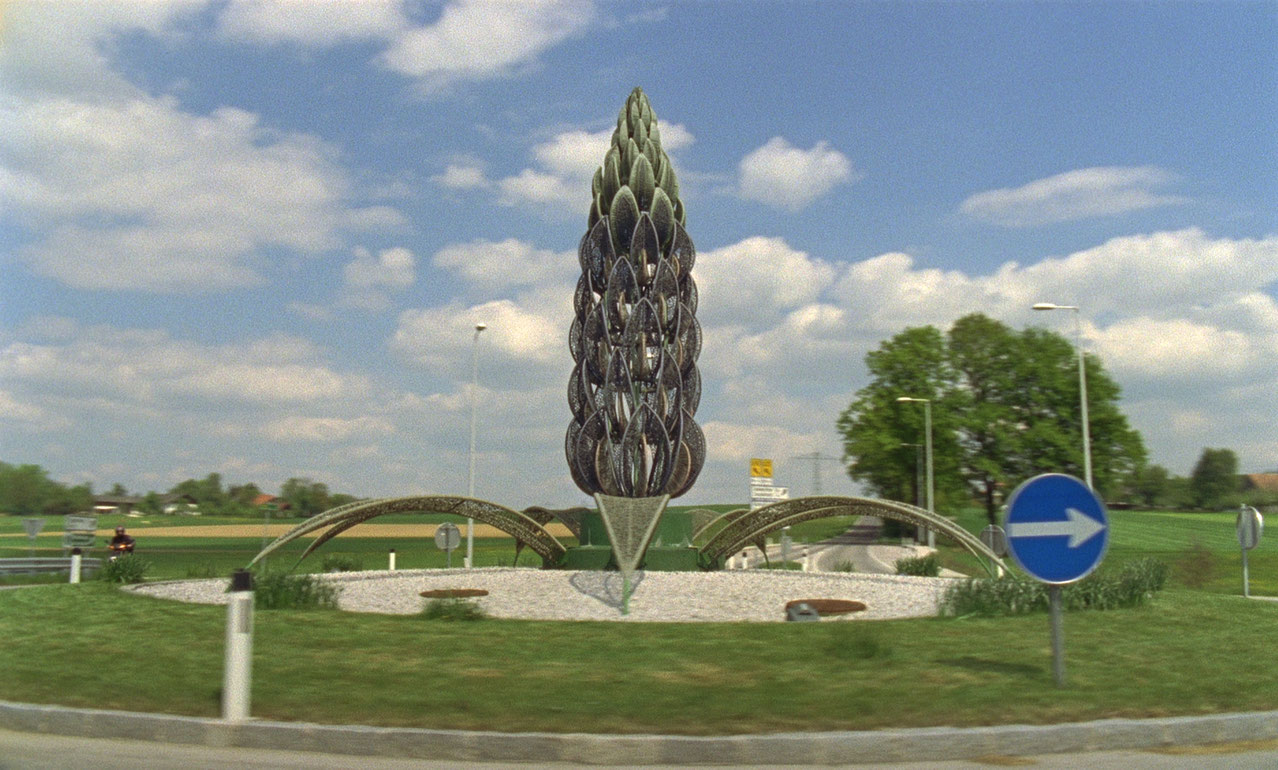A to A
This film centers on a very special form of street construction, in a very literal sense. A type of space ship of concrete, an underpass created below a rotunda, is the silent backdrop that serves as the nighttime entry into the film. The futuristic construction is traveled for 22 seconds before the title of the work – A to A (Kreis Wr.Neustadt) – appears and thus begins the rattle of the motor that accompanies the rest of the film: from his Vespa, Johann Lurf documents around 100 rotunda islands in Lower Austria, shown in increasingly grotesque segments of only a few seconds – and thus creates something of a catalogue of local building malfunctions. The center islands that he shows feature gravel, decorative hedges, or stone sculptures with grapevines, fountains, or ornamental flower bulbs, and are furnished with traffic signs, information postings, or advertisement objects.
A to A is thereby not only a study of the islands themselves, but above all, of the terror of the mundane, of everyday architectural horrors, which one can count on seeing in the field of traffic islands. The industrial areas of eastern Austria are disfigured by electrical poles, building cranes, and suburban residential blocks appear exchangeable and all of the discount furniture stores, gas stations and junk-food restaurants, the supermarkets and building supply stores seem like the unchanging set of a ghostly provincial staging. The monotony of the rotunda suggests here a commentary on the emptiness of Austrian real-scenery, punctuated only by the piping of the Vespa, which produces diverse whining, high-pitched motor sounds through the changing of gears, as if even the vehicle itself was lamenting the views that it is exposed to. The 3-D version, which provides an alternative way to admire A to A, incidentally also gives even more plastic impressions of Austrian architectural pragmatism.
(Stefan Grissemann)
Translation: Charlotte Eckler
Johann Lurf’s film Kreis Wr. Neustadt / A to A is an immersive document of numerous rotunda islands in Lower Austria. Built to control the speed and flow of traffic, the rotunda makes for a clearing in the built environment. Its center is functionless by default, but as its presence in space is inevitable, it offers itself as an island of representation. Circling these islands on his Vespa, Lurf catalogues the absurd symbolisms that emerge from them.
(Philip Widmann, Processing Landscape, Tourprogram Japan 2016)
There are all sorts of roundabouts. From simple decortive lawns to monumental sculptures. The camera looks on the ill-logic of urban filler architecture. Over 100 roundabouts are observed, inspected, and filmed, to compile an absurd catalogue that shows the grotesque existence of the horror of Austrian street bareness. Johann Lurf, artist and filmmaker who won the Premio Aprile with Vertigo Rush, is back in competition with a new eccentric and experimental work, conceived and filmed on a Vespa through little towns in the South of Austria.
(Milano Film Festival 2012)
From his very audible Vespa, Johann Lurf documents around 100 roundabouts in Lower Austria, creating a catalogue of the bizarre landscaping and banal architecture of these traffic islands and the roadside environments in which they exist.
(Images Festival Toronto)
Kreis Wr.Neustadt
2011
Austria
5 min


